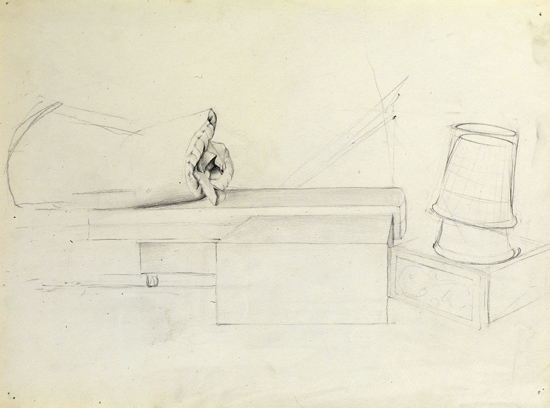
£630
Study of an interior with folded mattress and stacked bins, circa 1940
Framed (ref: 4791)
Pencil, 11 x 14 7/8 in. (28 x 38 cm.)
Tags: Victor Hume Moody pencil interiors

Pencil, 11 x 14 7/8 in. (28 x 38 cm.)
Tags: Victor Hume Moody pencil interiors
Provenance: The Artist's Estate; Private collection
Victor Moody studied at Battersea Polytechnic and at Royal College of Art under William Rothenstein In 1935 he became head master of Malvern School of Art, a post he held for 27 years until he was succeeded by his daughter, Catherine Olive Moody. He showed at the RA, RP and RBSA and had a solo show at Goupil Gallery, 1939. Moody produced classical compositions and portraits. Harris Museum & Art Gallery in Preston, Bolton and Worcester Libraries and Worcester Cathedral hold examples. Lived in Malvern, Worcestershire. Moody was featured in The Last of the Classicists, which the Harris mounted in 1993. The theme was enlarged at Blackburn Museum and Art Gallery in 203 with the installation Underpainting and The Painting Methods of V H Moody, stemming from researches made by a group including Moody's daughter Catherine.